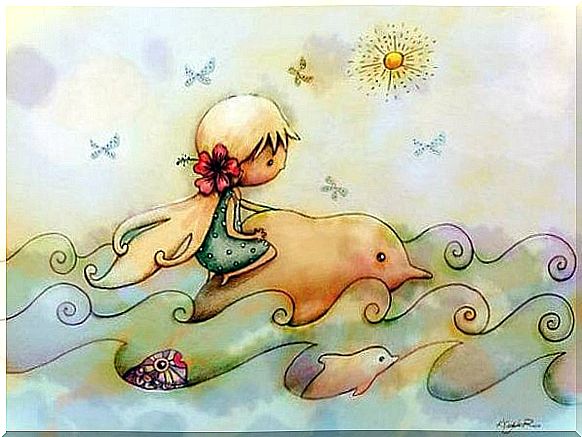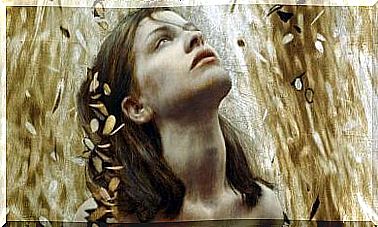5 Discoveries In Neuroscience That Support The Montessori Technique

” The most important duty of education is to root out life, but to give it the freedom to develop ,” Maria Montessori claimed more than a century ago. Today, the Montessori technique, which is the educational triangle on which her education and basic principle is based, is proven by neuroscience.
After years of research, Steve Hughes, a neuropsychologist, pediatrician and Montessori father, is convinced that the m ontessori technique strengthens certain brain functions that help improve cognitive development. He even calls the method: ” the original learning system based on the brain .”
Neurological development is enhanced by learning through the Montessori method. This claim is not only supported by hundreds of successful developments since its inception. But also through the various discoveries that today’s neuroscience has made. Let’s look at five of them:

Illustration by Karin Taylor
1. The hands are the instruments of human intelligence
“ Man perceives his surroundings through his hands. They are the tools of intelligence. A person’s hands are creative, they can produce things. The sensory organs and coordination are developed through manual activities, ”claimed Maria Montessori.
Today we know that the resources that the brain uses to process the sensory stimuli it picks up through the hands are significantly greater compared to the other parts of the body. So we can say that experiencing the world through one’s hands is like walking in the front door of our brain. Therefore, they play a central role in learning.
“ Homunculus motor ” and “ sensory homunculus ” are terms used to describe a distorted human figure. It reflects the relative sensory space that our body parts represent in the cerebral cortex. In both homunculi, the hands are significantly larger than other areas.
2. Natural experimentation strengthens the child’s abilities and characteristics
” Education is a natural process performed by the child and is not acquired by listening to words, but by gaining experience in the environment, ” said Maria Montessori.
Encouraging free and natural experimentation means encouraging children and babies to move around and communicate with their surroundings. Children learning through Montessori education spend more time on the move than in traditional schools. This active life promotes better control of motor, sensory, emotional and cognitive skills.
So the benefits of promoting an active attitude towards the environment make babies and children more competent. Especially when it comes to recognizing the intentions of others. This discovery is supported by various studies of the benefits of playing with velcro gloves to support this activity. In short, encouraging children to do something will help them learn faster than just observing. This is also apparent from the text published in 1981 by Kandel et al.

3. Executive functions and Montessori technique
Executive functions are the cognitive abilities that allow us to manipulate ideas mentally. These mental skills promote the conscientious, active, voluntary and effective solution of the problems that arise in daily life.
Learning to be flexible and accepting changes in our environment, concentrating on a task, continuing with a goal, resisting our impulses and using information in the right way is indispensable for our skills for proper development.
The term “executive functions” classifies these abilities into three categories: inhibition, working memory, and cognitive flexibility. If these features are not well developed, it can even lead to false diagnoses of disorders such as ADHD and other learning disabilities.
With Montessori learning developed at a time when this was not yet known, assistance was provided in the development of these features through various activities. For example, waiting, looking for things by going through a maze created by partners doing other activities, etc. Studies show that children who have attended Montessori kindergartens demonstrate better abilities in this type of cerebrospinal mental process.

Unknown Artist
4. The sensitive periods or opportunities for benefits in childhood
Maria Montessori observed that in childhood there were sensitive periods of learning. In these evolutionary moments, there is a great deal of neuro-emotional potential, and therefore education is crucial. Specifically, it is important for children to explore their world in the most independent way between the ages of 0 and 11 years .
Thus, we can extensively talk about the creation of Montessori microcosms or microworlds. This is the creation of a clean children’s environment: children’s furniture, small toys that stimulate exploration and cognitive flexibility, etc. Neuroscience has identified these stages where the brain needs some stimulation to develop.

Unknown Artist
5. Mirror neurons as a basis for learning
For children, seeing and experiencing the world is the basis of the care that the Montessori technique has for the youngest children. Mirror neurons found in the frontal lobe help absorb information about the environment through the senses. This was discovered by Maria Montessori through observation and later confirmed by the discovery of these neurons specializing in imitation.
As we can see, the Montessori method is one that receives a great deal of scientific support. It must continue to be examined in an exhaustive manner. It will guarantee the creation of a universe based on love and respect for the individual rhythms of every child and environment.









